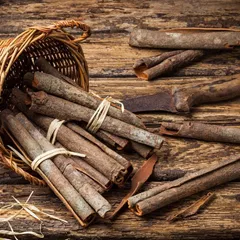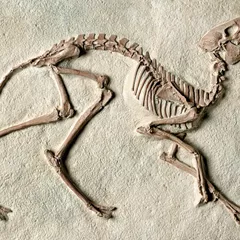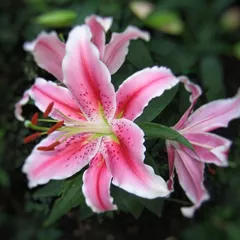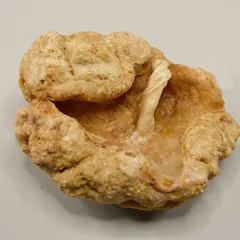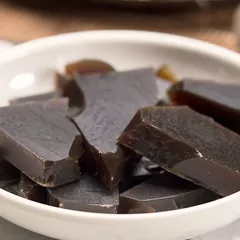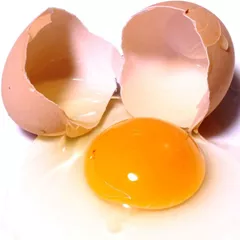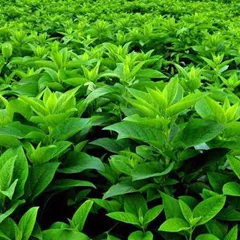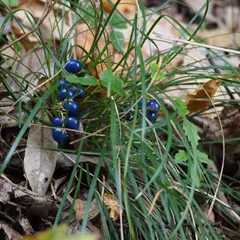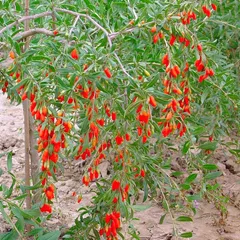Zhen Gan Xi Feng Tang
Zhen Gan Xi Feng Tang
Chinese: 镇肝熄风汤
Pinyin: Zhèn Gān Xí Fēng Tāng
Other names: Pacifying the Liver and Extinguishing Wind Decoction
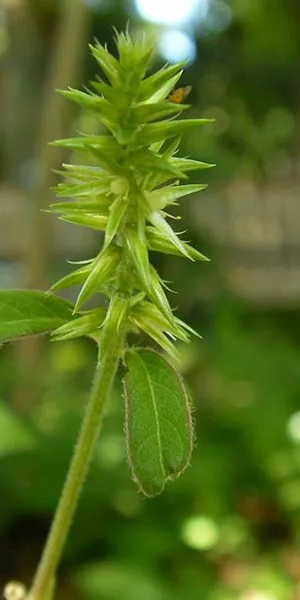
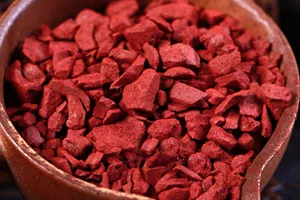
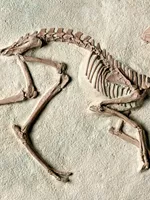
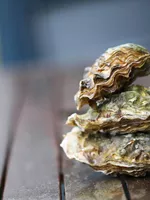




Zhen Gan Xi Feng Tang
Zhen Gan Xi Feng Tang
Chinese: 镇肝熄风汤
Pinyin: Zhèn Gān Xí Fēng Tāng
Other names: Pacifying the Liver and Extinguishing Wind Decoction
Number of ingredients: 12 herbs
Formula category: Formulas that pacify and extinguish Internal Wind
Conditions for which it may be prescribed: AphasiaApraxiaEpilepsy and twelve other conditions
- Sedates the Liver
- Axtinguishes Wind
- Nourishes the Yin
- Anchors the yang
Contraindications: Because this formula contains many enriching, cloying, heavy, and sedating... Because this formula contains many enriching, cloying, heavy, and sedating substances that can injure the Spleen Yang, it should be used with caution in cases with Spleen Qi Deficiency. see more
Source date: 1918 AD
Source book: Essays on Medicine Esteeming the Chinese and Respecting the Western
The information provided here is not a replacement for a doctor. You shouldn't use it for the purpose of self-diagnosing or self-medicating but rather so you can have a more informed discussion with a professional TCM practitioner.
Zhen Gan Xi Feng Tang is a 12-ingredient Chinese Medicine formula with Achyranthes Roots (Niu Xi) as a principal ingredient.
Invented in 1918 AD, it belongs to the category of formulas that pacify and extinguish Internal Wind. Its main actions are: 1) sedates the Liver and 2) axtinguishes Wind.
In Chinese Medicine health conditions are thought to arise due to "disharmonies" in the body as a system. These disharmonies are called "patterns" and the very purpose of herbal formulas is to fight them in order to restore the body's harmony.
In this case Zhen Gan Xi Feng Tang is used by TCM practitioners to fight patterns like Empty-Wind agitating in the Interior, Interior Wind or Liver Wind agitating Internally due to Liver Yang Rising. From a Western Medicine standpoint, such patterns can give rise to a range of conditions such as hypertension, renal hypertension or hypertensive encephalopathy for instance.
On this page, after a detailed description of each of the twelve ingredients in Zhen Gan Xi Feng Tang, we review the patterns and conditions that Zhen Gan Xi Feng Tang helps treat.
The twelve ingredients in Zhen Gan Xi Feng Tang
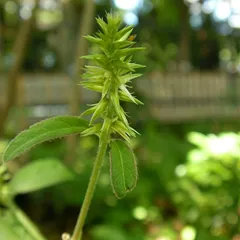
Niu Xi is a king ingredient in Zhen Gan Xi Feng Tang. Like the name indicates, it means it has more power than other ingredients in the formula.
1. Achyranthes Roots (Niu Xi)
Part used: Dried root
Nature: Neutral
Meridian affinity: KidneyLiver
Category: Herbs that invigorate the Blood
Niu Xi conducts the circulation of Blood downward, separating the Blood from the ascendant Yang. It also tonifies and nourishes the Liver and Kidneys.
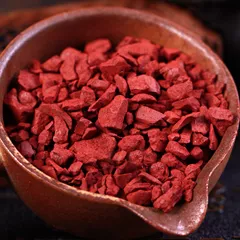
Dai Zhe Shi is a deputy ingredient in Zhen Gan Xi Feng Tang. This means it helps the king ingredient(s) treat the main pattern or it serves to treat a coexisting pattern.
2. Hematite (Dai Zhe Shi)
Part used: The mineral
Nature: Cold
Taste(s): Bitter
Meridian affinity: StomachHeartLiverPericardium
Category: Herbs that anchor and calm the Spirit
Dai Zhe Shi has a heavy nature that enables it to direct the Qi downward and control its rebelliousness. It calms the Liver, anchors the Yang, directs the Stomach Qi downward, and pacifies Rebellious Qi in the Penetrating vessel.
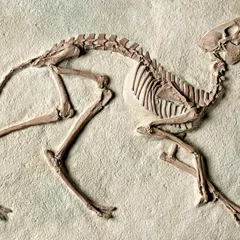
Long Gu is a deputy ingredient in Zhen Gan Xi Feng Tang. This means it helps the king ingredient(s) treat the main pattern or it serves to treat a coexisting pattern.
3. Dragon Bones (Long Gu)
Part used: The fossilized bone or vertebrae
Nature: Neutral
Taste(s): Sweet
Meridian affinity: HeartKidneyLiver
Category: Herbs that anchor and calm the Spirit
In general Long Gu's main actions are as follows: "Calms the spirit. Anchors ascendant Liver Yang. Stops leakage of Bodily Fluids."
In the context of Zhen Gan Xi Feng Tang, it is used because it can restrain Fire and extinguish Wind.
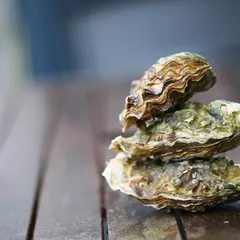
Mu Li ke is a deputy ingredient in Zhen Gan Xi Feng Tang. This means it helps the king ingredient(s) treat the main pattern or it serves to treat a coexisting pattern.
4. Oyster Shells (Mu Li ke)
Part used: The shell
Nature: Cold
Taste(s): Salty
Meridian affinity: BladderGallbladderKidneyLiver
Category: Herbs that anchor and calm the SpiritHerbs that pacify Internal Liver Wind and stop Tremors
In general Mu Li ke's main actions are as follows: "Calms and anchors the spirit. Moistens Dryness. Softens and removes lumps. Nourish the Yin and subdues the overflowing of the Yang,"
In the context of Zhen Gan Xi Feng Tang, it is used because it can restrain Fire and extinguish Wind.

Gui Ban is an assistant ingredient in Zhen Gan Xi Feng Tang. This means that it either serves to reinforces the effect of other ingredients or it moderates their toxicity.
5. Tortoise Plastrons (Gui Ban)
Part used: Carapace and plastron
Nature: Cool
Meridian affinity: HeartKidneyLiver
Category: Tonic herbs for Yin Deficiency
Gui Ban clears Heat, nourishes the Yin, and enriches the Fluids. This treats the ascendant Liver Yang at the root, which indirectly extinguishes the Wind.
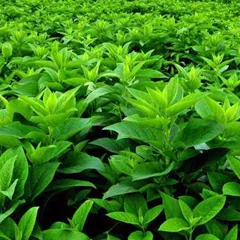
Xuan Shen is an assistant ingredient in Zhen Gan Xi Feng Tang. This means that it either serves to reinforces the effect of other ingredients or it moderates their toxicity.
6. Ningpo Figwort Roots (Xuan Shen)
Part used: Dried rhizome
Nature: Cold
Taste(s): Bitter
Meridian affinity: Large intestineLiverStomach
Category: Herbs that cool the Blood
Xuan Shen clears Heat, nourishes the Yin, and enriches the Fluids. This treats the ascendant Liver Yang at the root, which indirectly extinguishes the Wind.
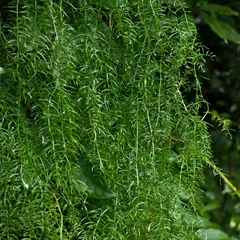
Tian Men Dong is an assistant ingredient in Zhen Gan Xi Feng Tang. This means that it either serves to reinforces the effect of other ingredients or it moderates their toxicity.
7. Chinese Asparagus Tubers (Tian Men Dong)
Tian Men Dong clears Heat, nourishes the Yin, and enriches the Fluids. This treats the ascendant Liver Yang at the root, which indirectly extinguishes the Wind.
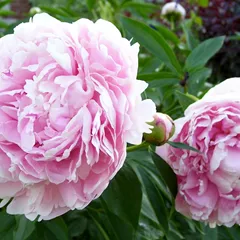
Bai Shao is an assistant ingredient in Zhen Gan Xi Feng Tang. This means that it either serves to reinforces the effect of other ingredients or it moderates their toxicity.
8. White Peony Roots (Bai Shao)
Part used: Dried root
Nature: Neutral
Meridian affinity: LiverSpleen
Category: Tonic herbs for Blood Deficiency
Bai Shao clears Heat, nourishes the Yin, and enriches the Fluids. This treats the ascendant Liver Yang at the root, which indirectly extinguishes the Wind.
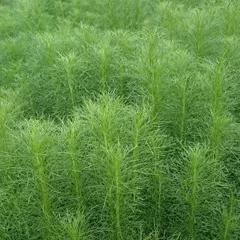
Yin Chen is an assistant ingredient in Zhen Gan Xi Feng Tang. This means that it either serves to reinforces the effect of other ingredients or it moderates their toxicity.
9. Virgate Wormwood (Yin Chen)
Part used: Dried aerial parts
Nature: Cool
Meridian affinity: GallbladderLiverSpleenStomach
Category: Herbs that drain Dampness
Yin Chen smoothes the movement of Liver Qi and drains Liver Yang Excess. This reinforces the actions of pacifying, controlling, and sedating the Liver yang.
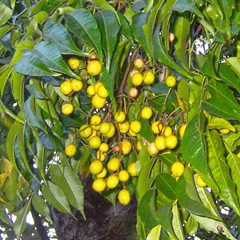
Chuan Lian Zi is an assistant ingredient in Zhen Gan Xi Feng Tang. This means that it either serves to reinforces the effect of other ingredients or it moderates their toxicity.
10. Sichuan Chinaberries (Chuan Lian Zi)
Part used: Dried ripe fruit
Nature: Cold
Taste(s): Bitter
Meridian affinity: SpleenLiverSmall intestine
Category: Herbs that regulate Qi
Chuan Lian Zi smoothes the movement of Liver Qi and drains Liver Yang Excess. This reinforces the actions of pacifying, controlling, and sedating the Liver yang.
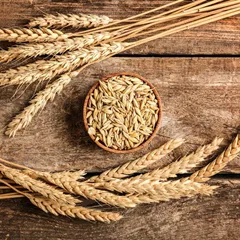
Mai Ya is an assistant ingredient in Zhen Gan Xi Feng Tang. This means that it either serves to reinforces the effect of other ingredients or it moderates their toxicity.
11. Malt (Mai Ya)
Part used: Dried germinated ripe fruit
Nature: Neutral
Taste(s): Sweet
Meridian affinity: SpleenStomach
Category: Herbs that relieve Food Stagnation
Mai Ya smoothes the movement of Liver Qi and drains Liver Yang Excess. This reinforces the actions of pacifying, controlling, and sedating the Liver yang.
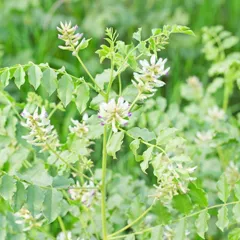
Gan Cao is an envoy ingredient in Zhen Gan Xi Feng Tang. This means that it directs the formula towards certain area of the body and/or harmonizes the actions of other ingredients.
12. Liquorice (Gan Cao)
Part used: Dried root and rhizome
Nature: Neutral
Taste(s): Sweet
Meridian affinity: HeartLungSpleenStomach
Category: Tonic herbs for Qi Deficiency
In general Gan Cao's main actions are as follows: "Tonifies the Basal Qi and nourishes the Spleen Qi. Clears Heat and dispels toxicity. Moistens the Lungsexpel phlegm and stop coughing. Relieves spasms and alleviates pain. Harmonizes and moderates the effects of other herbs."
In the context of Zhen Gan Xi Feng Tang, it is used because it regulates and harmonizes the actions of the other ingredients.
Conditions and patterns for which Zhen Gan Xi Feng Tang may be prescribed
It's important to remember that herbal formulas are meant to treat patterns, not "diseases" as understood in Western Medicine. According to Chinese Medicine patterns, which are disruptions to the body as a system, are the underlying root cause for diseases and conditions.
As such Zhen Gan Xi Feng Tang is used by TCM practitioners to treat three different patterns which we describe below.
But before we delve into these patterns here is an overview of the Western conditions they're commonly associated with:
Hypertension Renal hypertension Hypertensive encephalopathy Aphasia Apraxia Epilepsy Parkinson's disease Trigeminal neuralgia Postconcussion syndrome Recalcitrant hiccup Cerebral arteriosclerosis Coronary artery disease Acute nephritis Perimenopausal syndrome Puerperal fever
Again it wouldn't be correct to say "Zhen Gan Xi Feng Tang treats hypertension" for instance. Rather, Zhen Gan Xi Feng Tang is used to treat patterns that are sometimes the root cause behind hypertension.
Now let's look at the three patterns commonly treated with Zhen Gan Xi Feng Tang.

The Interior in Chinese Medicine is one of the so-called "Eight Principles". Learn more about Interior in Chinese Medicine
Empty-Wind agitating in the Interior
Pulse type(s): Rapid (Shu), Fine (Xi)
Symptoms: Weight loss Malar flush Listlessness Low-grade fever Tremor of limbs Twitching of limbs
Zhen Gan Xi Feng Tang is sometimes prescribed by TCM practitioners to treat Empty-Wind agitating in the Interior. This pattern leads to symptoms such as low-grade fever, tremor of limbs, weight loss and malar flush. Patients with Empty-Wind agitating in the Interior typically exhibit rapid (Shu) or fine (Xi) pulses.
This is one of the five patterns of the Blood level, which is the fourth and last level of the Four Levels theory. This means this is a very serious pattern where an External Pathogen has penetrated deeply within the body.
Contrary to Heat victorious stirring Wind, another pattern at this level,... read more about Empty-Wind agitating in the Interior

The Interior in Chinese Medicine is one of the so-called "Eight Principles". Learn more about Interior in Chinese Medicine
Interior Wind
Pulse type(s): Fine (Xi), Rapid (Shu), Wiry (Xian)
Symptoms: Coma Tics Fever Anger Tremor Insomnia Dry eyes Red eyes Red face Deafness Dizziness Paralysis Headaches Back pain Dry throat Convulsions Poor memory Irritability Constipation Eye deviation Blurred vision Scanty periods Tremor of limbs Mouth deviation Numbness in the limbs Dream disturbed sleep
Zhen Gan Xi Feng Tang is sometimes prescribed by TCM practitioners to treat Interior Wind. This pattern leads to symptoms such as convulsions, tremor of limbs, dizziness and paralysis. Patients with Interior Wind typically exhibit fine (Xi), rapid (Shu) or wiry (Xian) pulses.
Interior Wind is mostly referred to be the Liver Wind. There are 4 types of Interior Liver Wind due to the original causes:
1. Liver Wind agitating Internally due to Liver Fire
2. Liver Wind agitating Internally due to extreme Heat
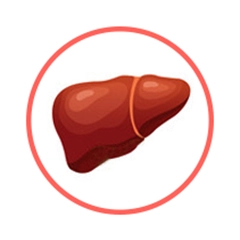
The Liver is a so-called "Zang" Organ. Learn more about the Liver in Chinese Medicine
Liver Wind agitating Internally due to Liver Yang Rising
Pulse type(s): Rapid (Shu), Empty (Xu), Wiry (Xian), Fine (Xi), Floating (Fu)
Tongue color: Red
Symptoms: Coma Tremor Vertigo Tinnitus Dry eyes Insomnia Headaches Back pain Dizziness Facial tic Dry throat Poor memory Convulsions Hypertension Night sweats Blurred vision Severe dizziness Scanty urination Tingling of limbs Numbness in the limbs Dream disturbed sleep Spasms in the extremities Numbness in the extremities Twitching in the extremities Feeling of heat rushing to the head
Zhen Gan Xi Feng Tang is sometimes prescribed by TCM practitioners to treat Liver Wind agitating Internally due to Liver Yang Rising. This pattern leads to symptoms such as tremor, facial tic, severe dizziness and tinnitus. Patients with Liver Wind agitating Internally due to Liver Yang Rising typically exhibit rapid (Shu), empty (Xu), wiry (Xian), fine (Xi) or floating (Fu) pulses as well as Red, pale normal color with no coating.
Liver Yang Rising can create Interior Wind if the condition is left unchecked for a long time. This pattern is normally seen among the elderly.
Liver Yang Rising has different symptoms based on what caused it in the first place. If caused by Liver Yin Deficiency the symptoms includes tremors,... read more about Liver Wind agitating Internally due to Liver Yang Rising
Formulas similar to Zhen Gan Xi Feng Tang
Gui Zhi Jia Long Gu Mu Li Tang is 33% similar to Zhen Gan Xi Feng Tang
Bai He Gu Jin Tang is 25% similar to Zhen Gan Xi Feng Tang
He Che Da Zao Wan is 25% similar to Zhen Gan Xi Feng Tang
E Jiao Ji Zi Huang Tang is 25% similar to Zhen Gan Xi Feng Tang
Yang Yin Qing Fei Tang is 25% similar to Zhen Gan Xi Feng Tang
Qing Re Gu Jing Tang is 25% similar to Zhen Gan Xi Feng Tang

